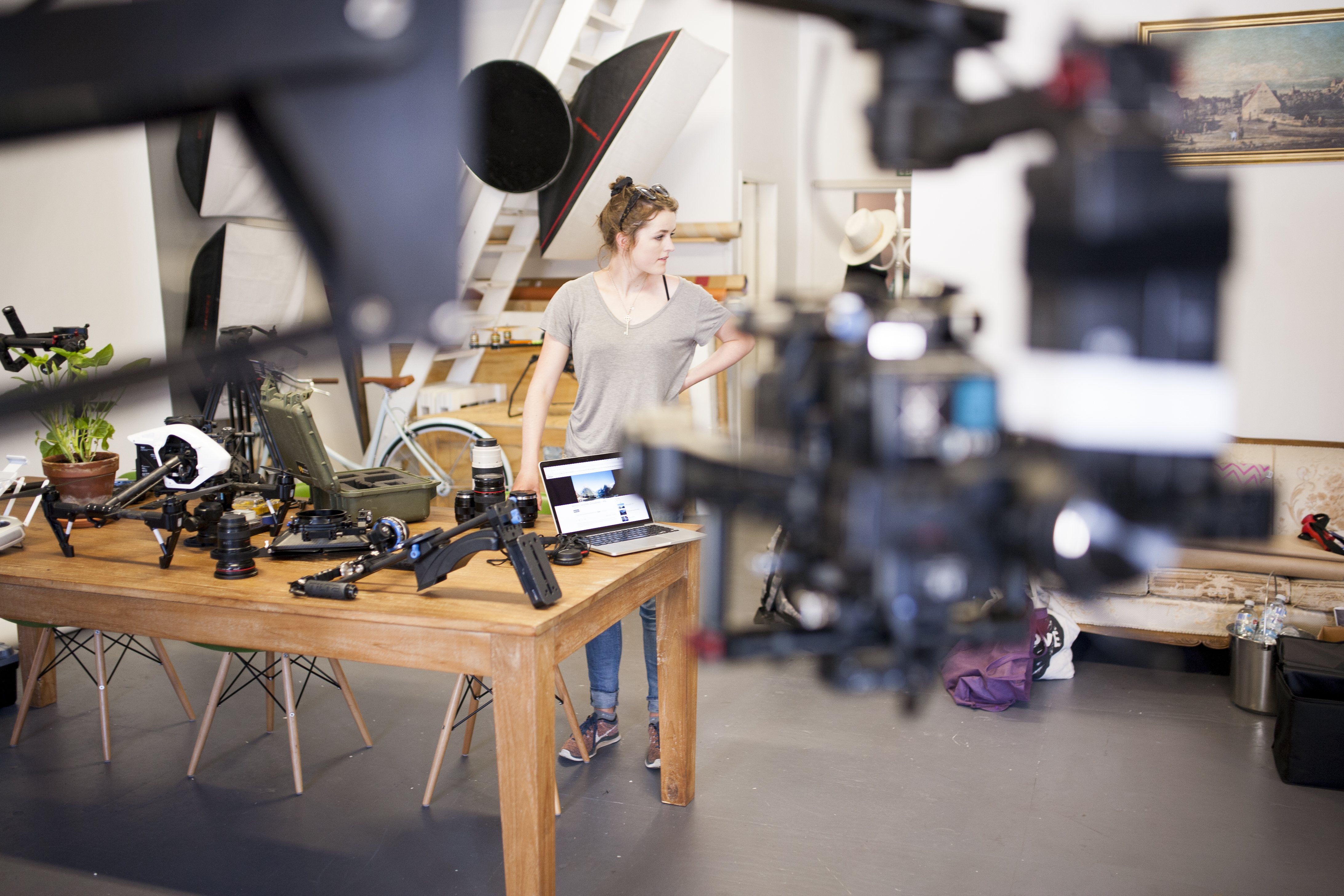We’ve all heard the stats: Video will be responsible for 82% of internet traffic by 2021. It’s already the hero across every social media and digital marketing channel, and is becoming increasingly important for almost every department across the business. While we know that video outperforms every other piece of content, the major challenge brands face is how to make more of it, at a high quality, while not breaking the bank.
As we creep closer to 2021, it’s becoming clear that how brands scale their video strategy in order to remain relevant and win the attention of their audience will be the difference between business growth and complete obscurity.
So what’s the secret? One thing we’ve learned from working with leading brands such as Sephora, Deloitte, Time Inc. and Shopify is this:
How you design your video workflow will be key to your success.

Why is your video workflow the key? As your business (and audience) demand more video content, your traditional workflow becomes unable to produce the quality and quantity of video needed. Simple adjustments to your video workflow will start to address the new complexities and stakeholders that come with producing more content, so that as you scale you do so in a way that is designed for speed, efficiency, and performance.
So follow these five guidelines to start future proofing your workflow and join in on the success that scaling your video strategy will bring to your company.
1. Get buy-in: Think big, start small, scale fast
Video strategy is no longer about ad-hoc video production. You need to think big about the role video can have across your business, both internally (training, company updates) and externally (how-to’s, brand videos, social video), and then work backwards about how you’re going to get there.
Build a business case for videos in your company, engage your team and stakeholders, and plan with scale in mind. Sell the vision early, so that each stage of scaling is part of the success plan, rather another lengthy approval process.
Like any business plan you need to know your objectives and measure success. A good place to start is to identify some easy wins, such as videos created to push conversion or engagement of your customer base (how to’s and explainers will keep your customers happy) and watch the momentum gather from there.
If you play your cards right, you might end up like Sephora who went from producing 24 videos per year to 700, in just 4 years. Luckily for Sephora, they had put in the hard yards to create a workflow that worked just as efficiently at 24 as it did at 700.

2. Bring video expertise in-house
Strengthening your own in-house video expertise doesn’t mean that all video needs to be produced in house, but you do need to own the strategy and the workflow. The traditional agency model will not scale with the efficiencies and alignment you need to truly become a video-first enterprise.
Many of you will already have an in-house video team (congrats!) and the challenge going forward is to evolve the role of this team to become true experts and enablers of video across the entire video lifecycle, from ideation, to production, to distribution. When necessary they can also help manage the relationship with agencies and freelancers needed to get the job done, while still overseeing workflow and ensuring quality control.
An excellent example of this is Deloitte. Their global office has an in-house video team of just three people responsible for producing video for a network of over 280,000 employees. They have evolved their role to become true enablers of video, overcoming barriers of limited resources, dispersed stakeholders, and a vigilant approval process.
You can learn first hand how Deloitte’s 3-person video team are bringing video to the forefront of their internal comms strategy in our exclusive webinar.
3. Unleash collaboration across the enterprise
One of the reasons video has been so hard to scale is that the process often involves multiple levels of stakeholders, from editors and producers, to VP’s and legal, which makes working together slow and sometimes painful.
By creating a centralized online video workspace that connects teams, departments, execs, and creatives, you’ll develop dramatically faster production cycles and better video alignment across the company.
Shimano once suffered through three month turnarounds waiting for all necessary stakeholders to provide feedback on their videos. Today it takes their internationally based team less then a week for the same result. This ability to collaborate freely across time zones began as a huge timesaver but has since lead to increased company alignment, shared resources across offices, and higher quality videos.
“It’s become a global ‘everybody looks at it’ process. It used to be that Europe made content for Europe, Japan made content for Japan, and we made content for North America, but that’s all consolidating now so that California is producing the video content for the entire world.” – Shuji Sakai, Shimano

4. Create quality AND quantity
How do you create more video out of the same budget or team size? The answer is two fold:
Firstly, quality video ≠ production value. A quality video is not the one with the highest budget or the best cameras, it’s the one that is most successful at delivering on its objective. Remember that creativity, relevance, authenticity, and quality of message outshines production value, every time.
“We’ve noticed that the general audience was responding to something a little more stripped down, that felt more approachable. They want something that could look like it was being done at home - something that looked realistic and the shots weren’t glossy.” Jason Keener – Video Producer, Time Inc
The other way to increase quantity is to bring down the cost per video. Look for ways to streamline the production process, such as creating video with a repeatable format (like a series), and get the most out of shoot days with meticulous planning. Time Inc managed to make 3x more video on the same budget, by doing just that.
5. Mix process with agility
When you’re making 10x (or more) video than you used to, things can quickly get out of control. So when the video projects inevitably increase, it’s important that you have the structure in place that ensures all video go through the correct review and approval process.
Because there are so many stakeholders involved in various projects across the business, it’s also a huge timesaver to have a transparent system of record capturing all the activity in one place. This allows project managers and producers to quickly jump in and see what has or hasn’t been done, whether it’s approved or not, and the actions required.
By saving time, having confidence in your process, and gaining the clarity needed to make informed decisions, it’s possible to be more agile in order to try new things and be responsive to new opportunities and trends. Having a mix of both will ensure compliance but also make sure your organization keeps innovating and learning, like Shopify.
“We did an experiment where we tried to put out a video a day on Facebook for three months. It felt like insanity because we were creating so much content…but by doing this experiment we were able to figure out when we needed to put in that extra effort.”
“A simple video that we made in like two days gave us more results than videos that we would spend months on.” – Matt Wiebe, Shopify
Be the change
While undertaking improvements to process can seem daunting, workflow is a game of iterations with potentially huge payoffs. Small changes and advancements add up, and soon you’ll be producing with the best of them.
Want to hear how these tactics have worked in real world examples? Watch our webinar to see how Deloitte accomplished staggering results with very limited resources.
WEBINAR: How Deloitte's 3-Person Video Team United a Company of 280,000


